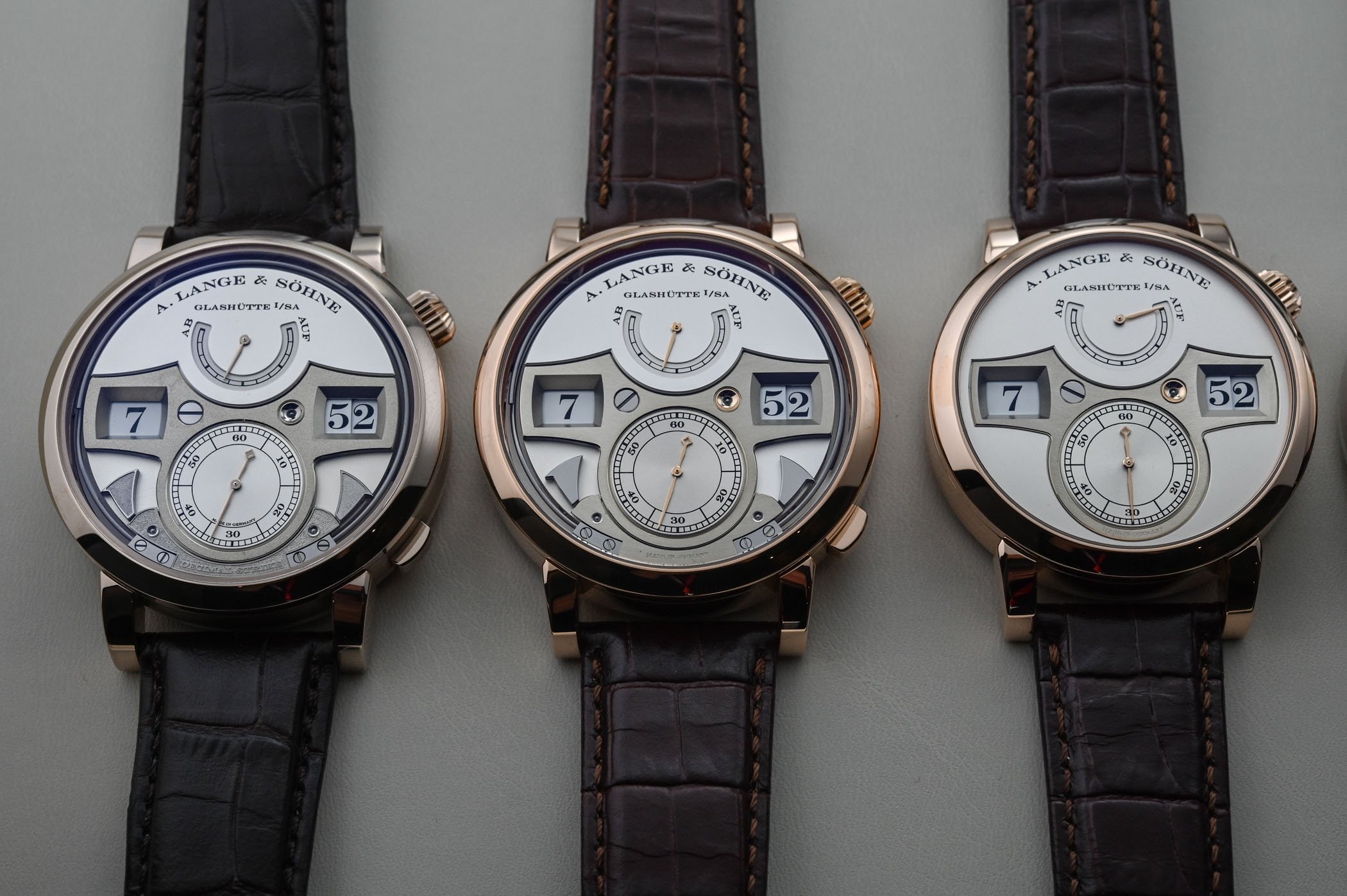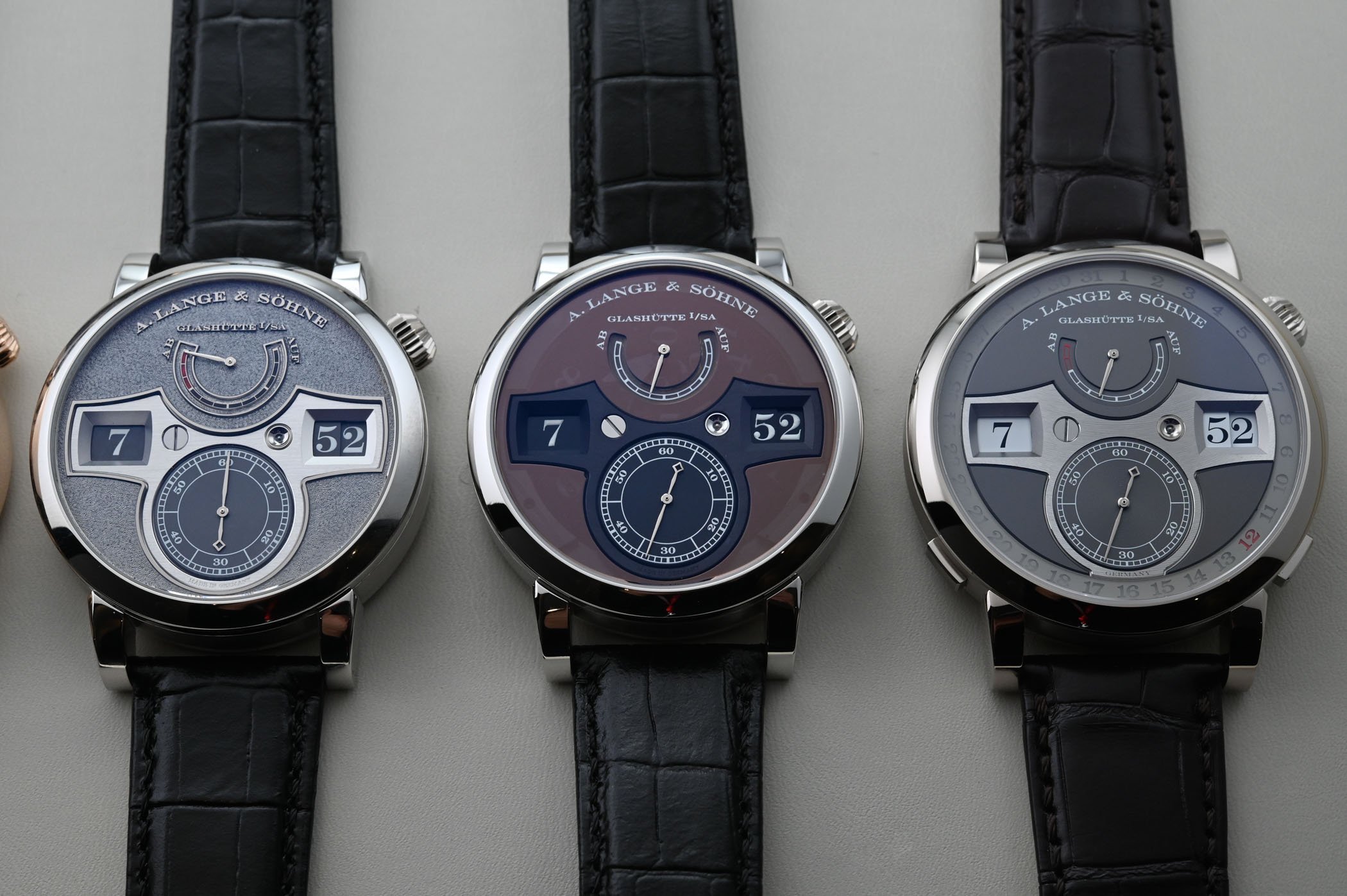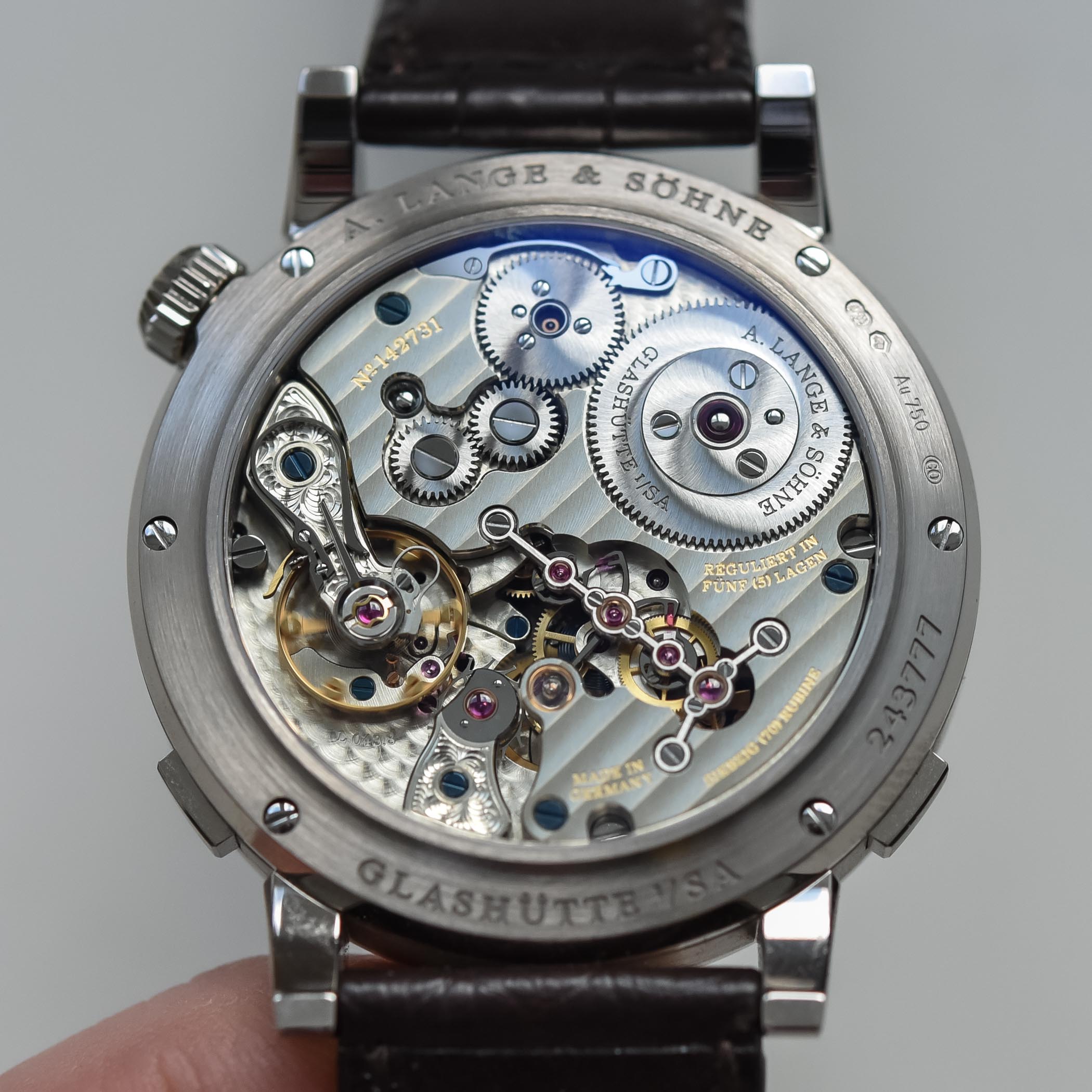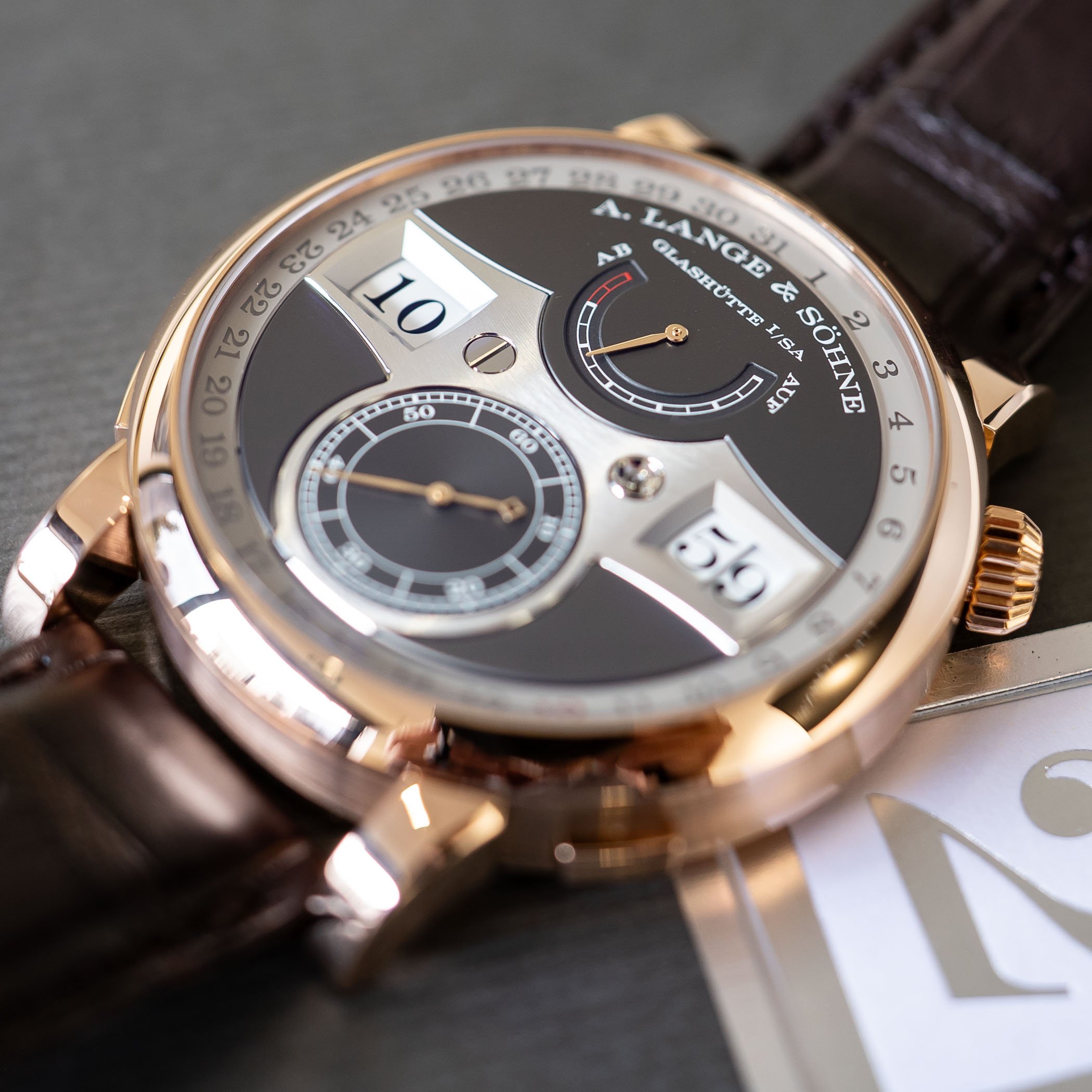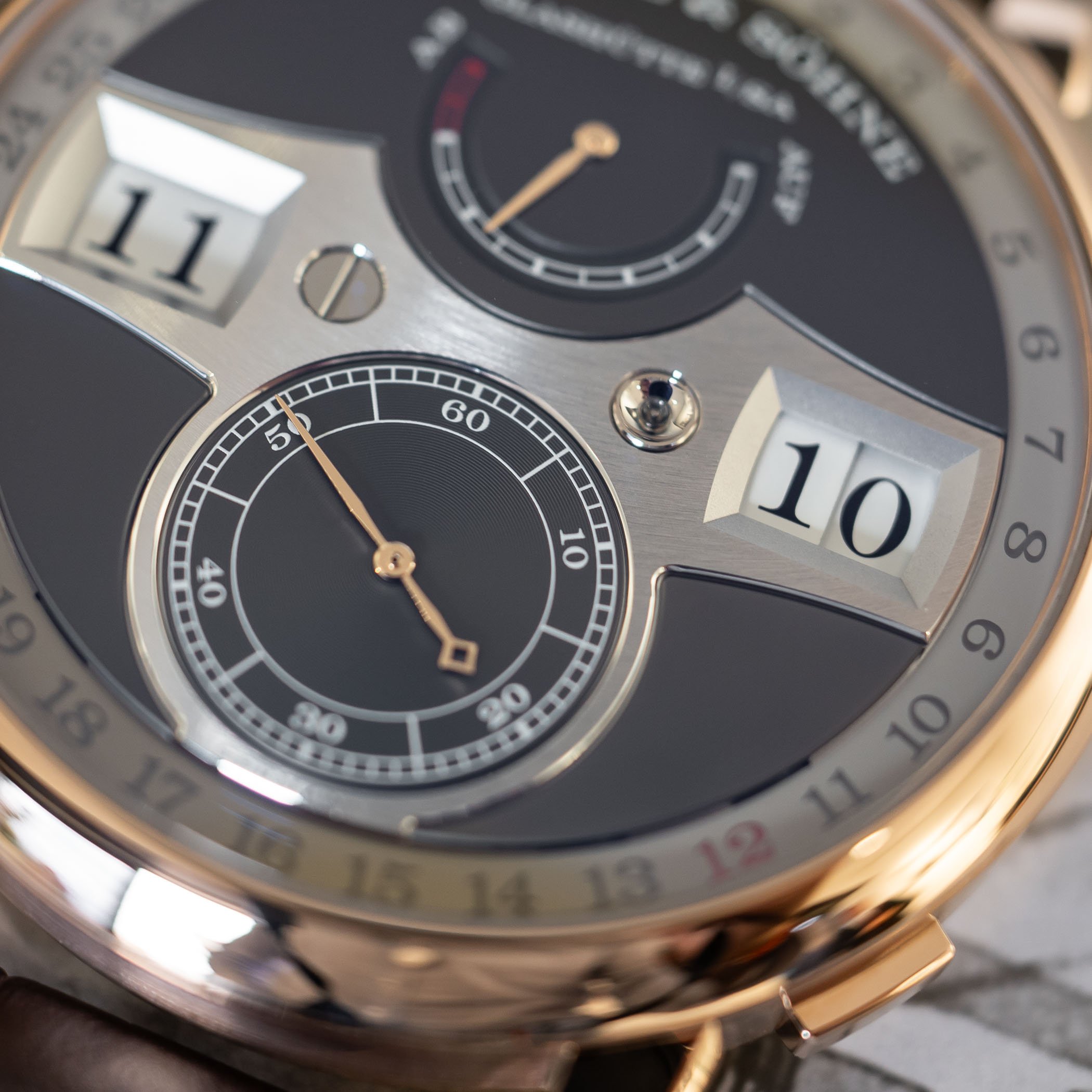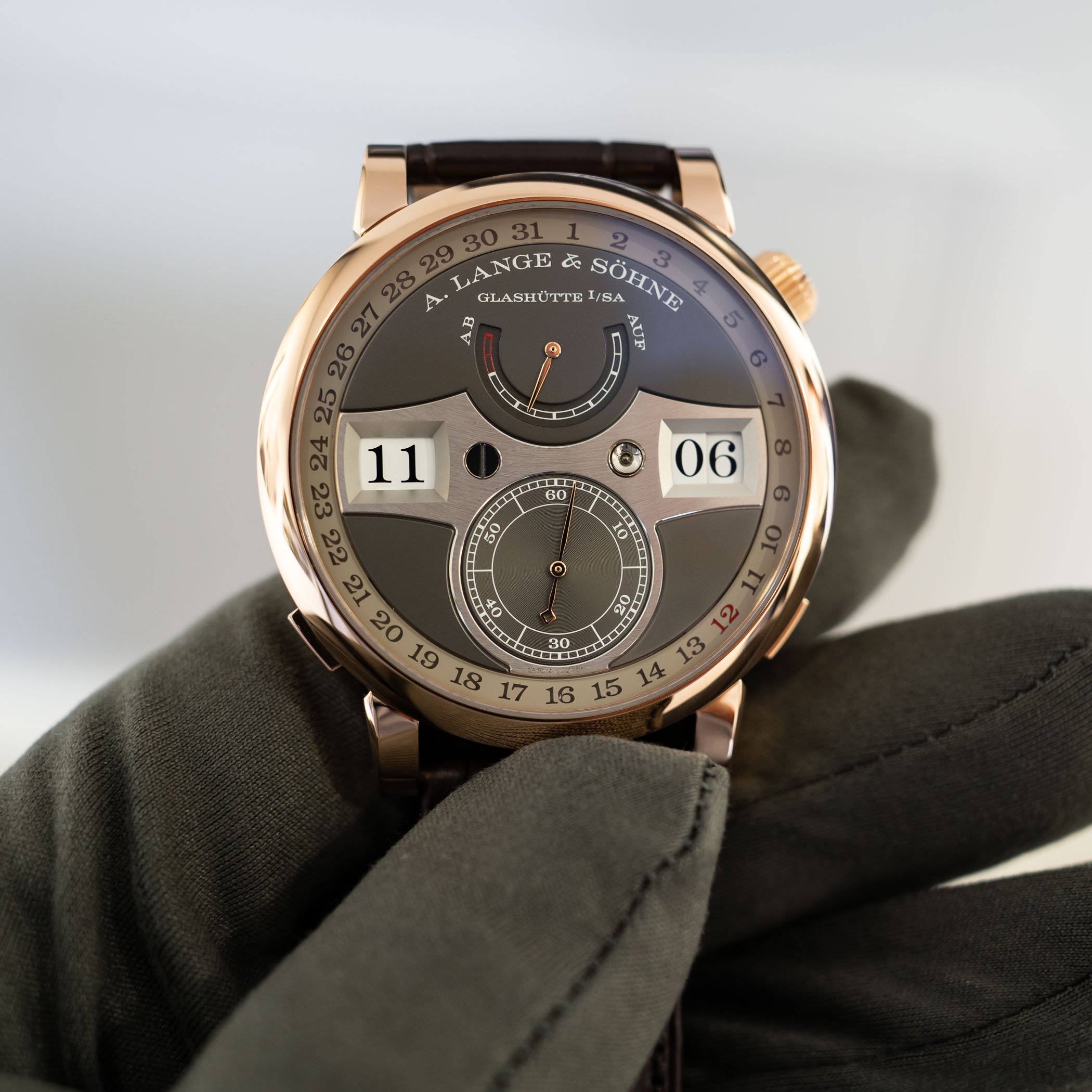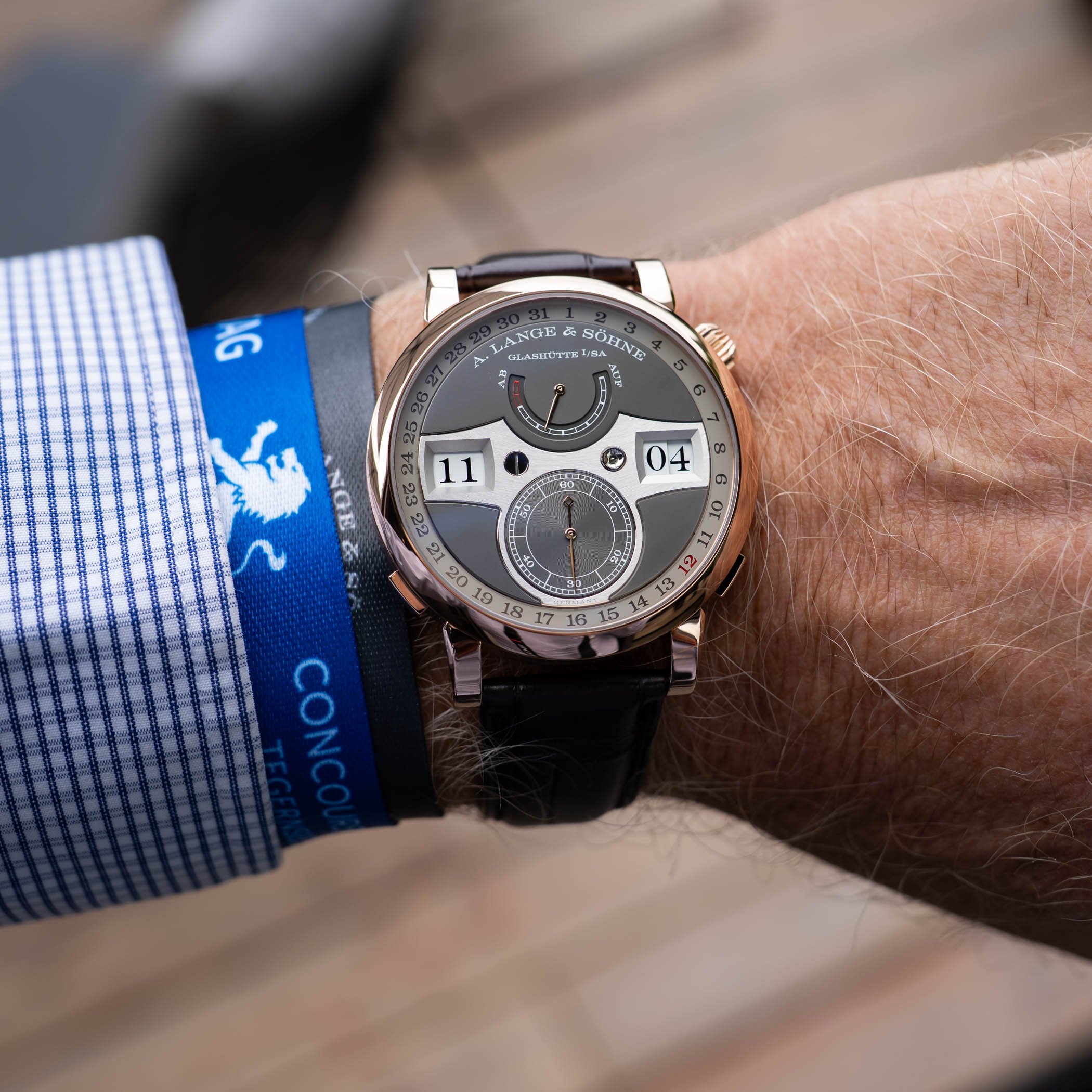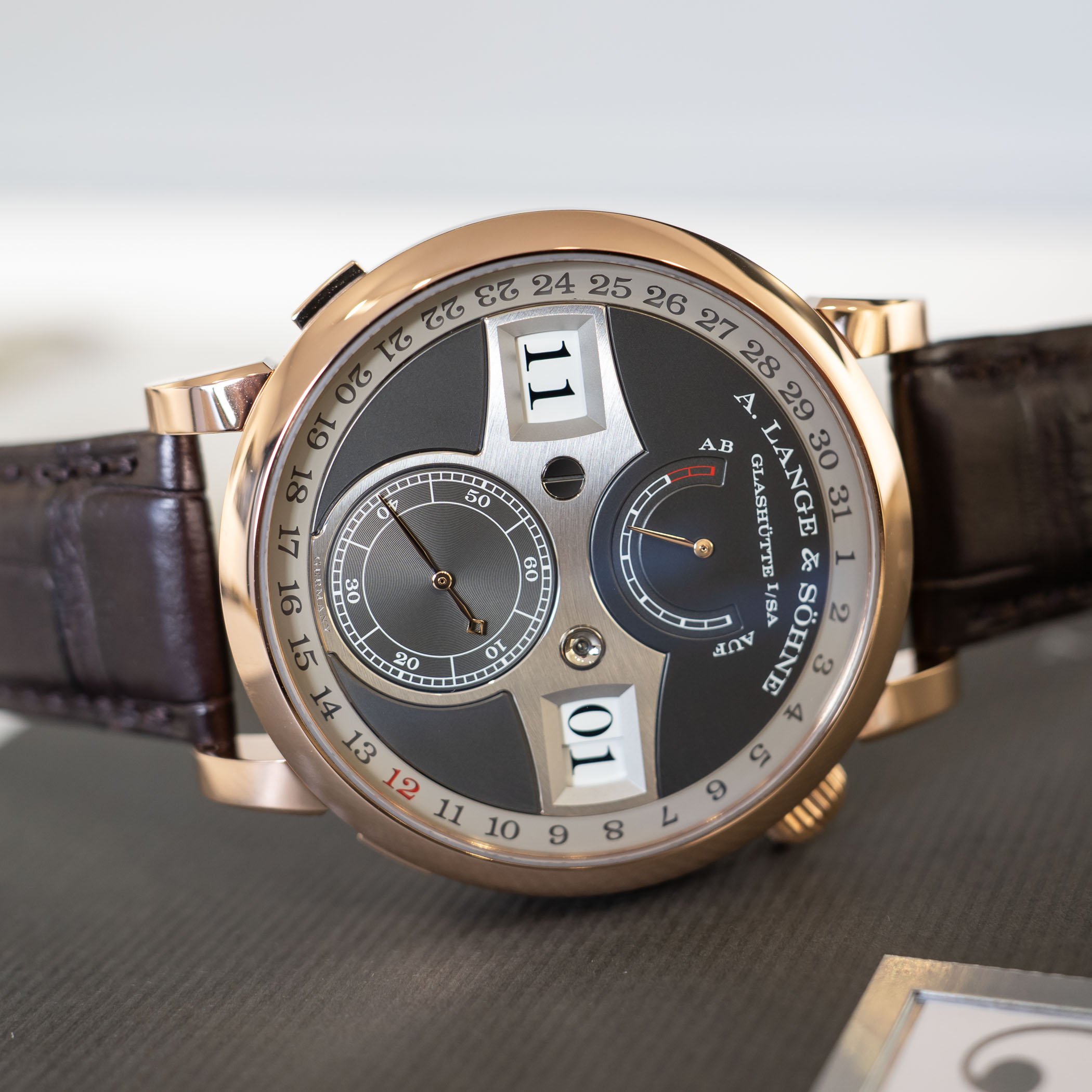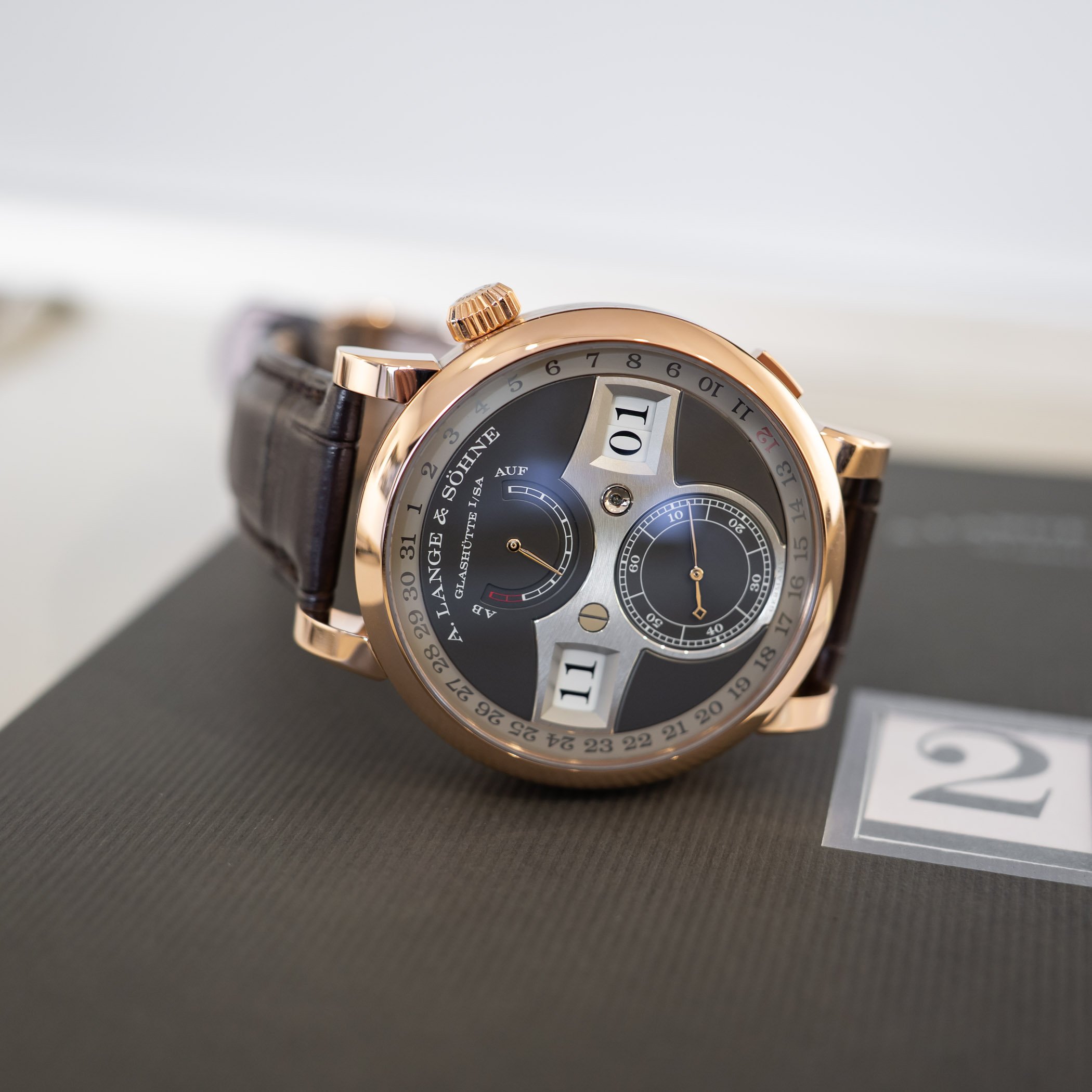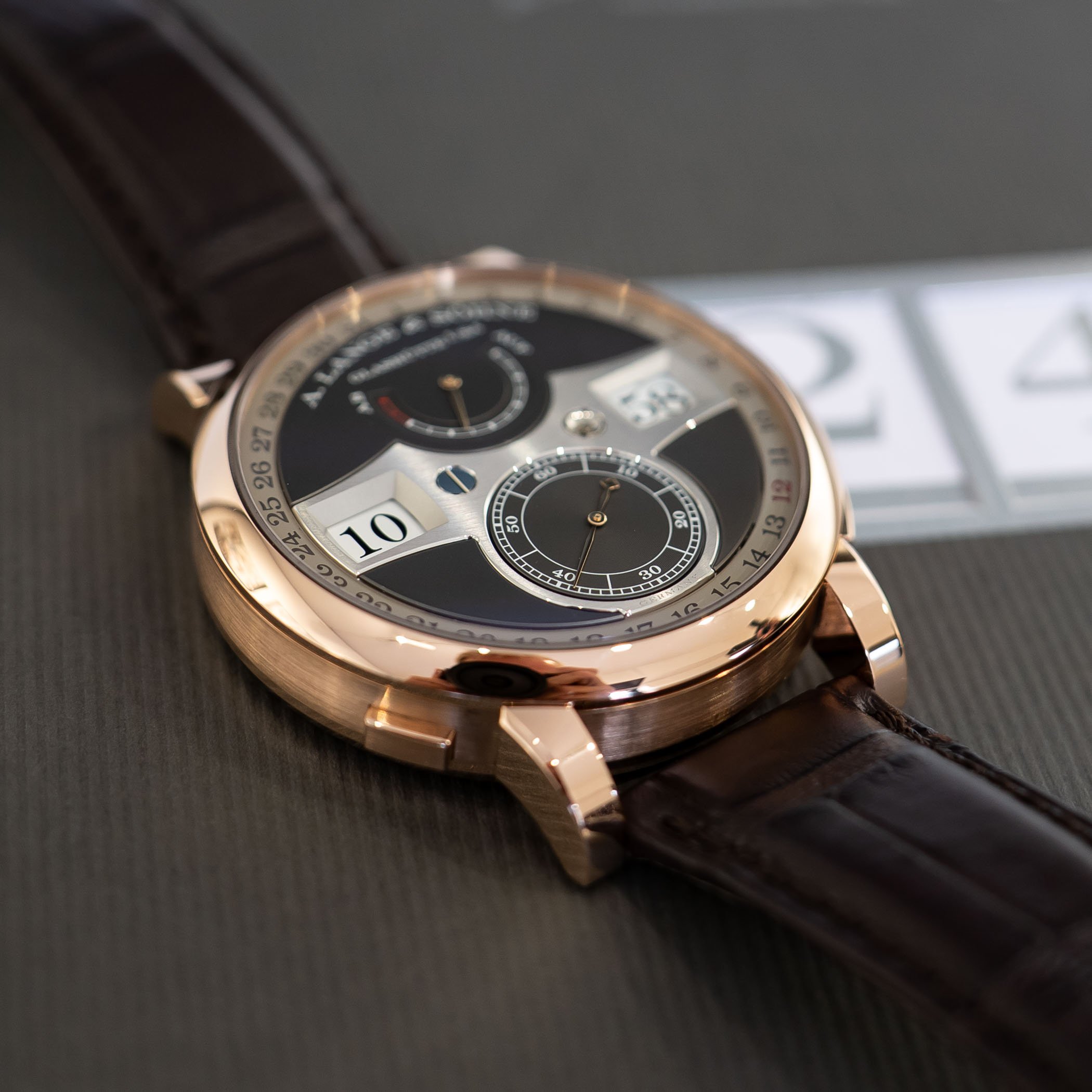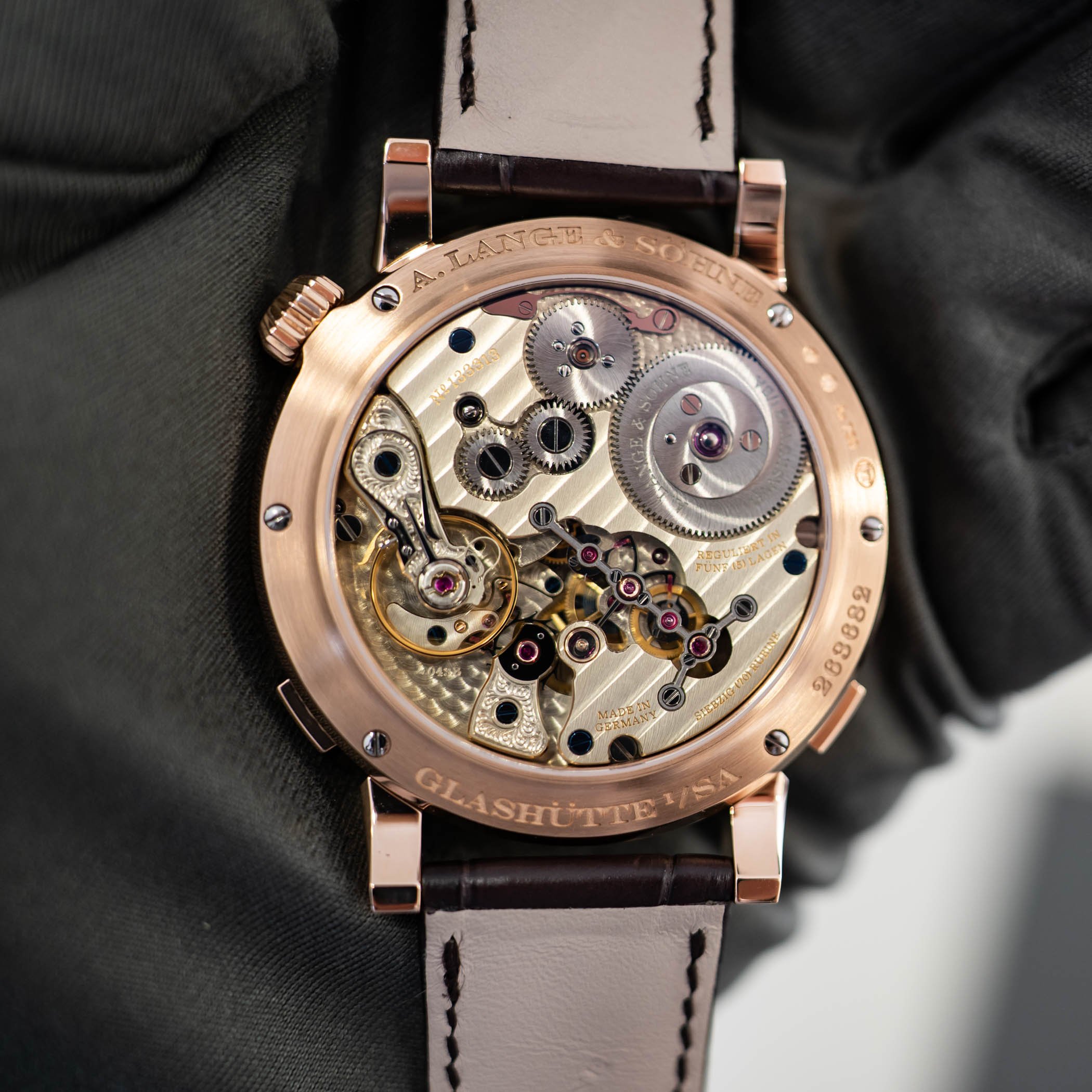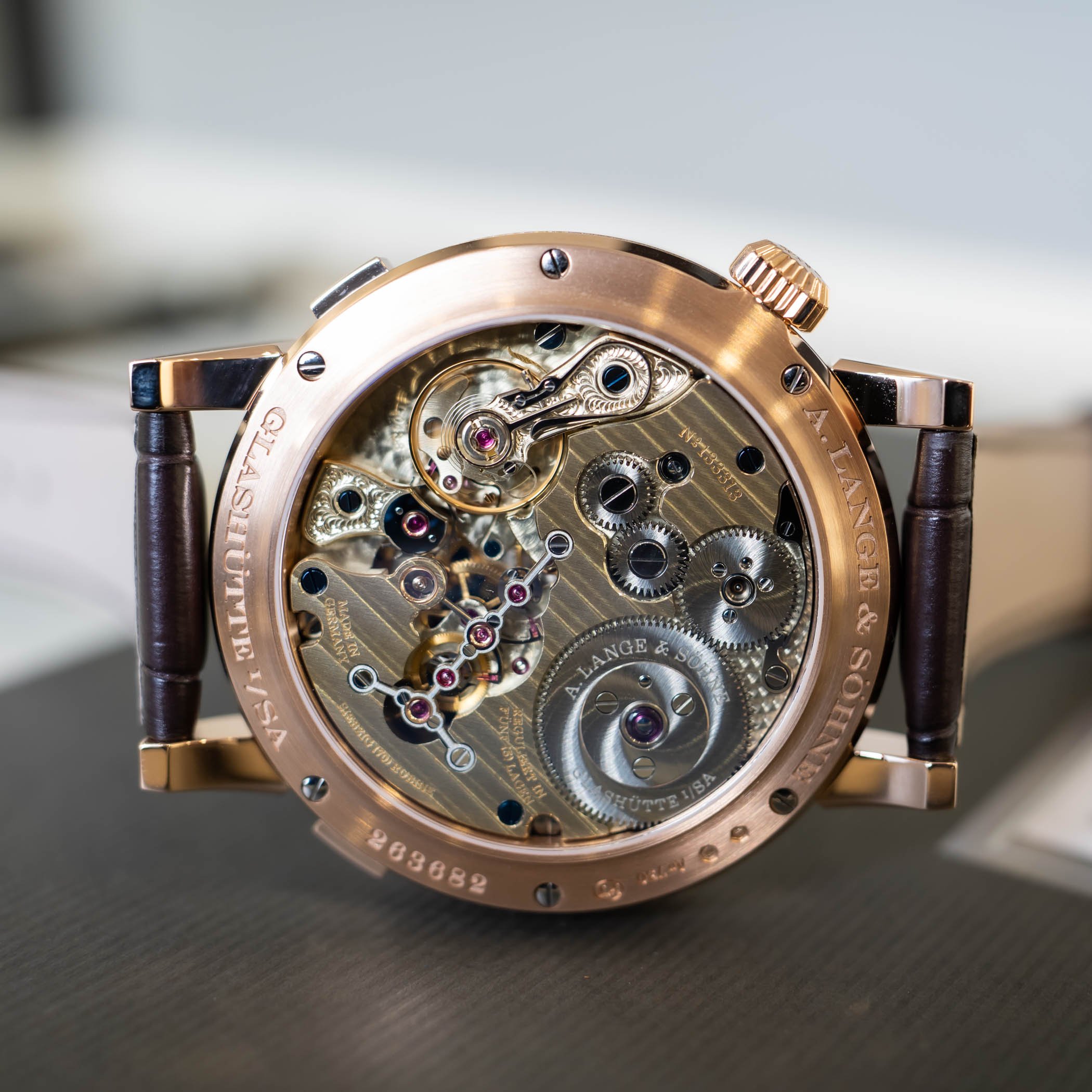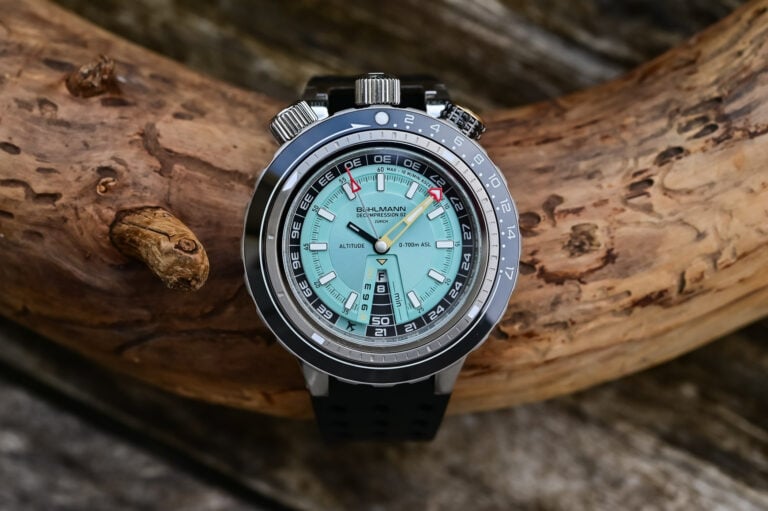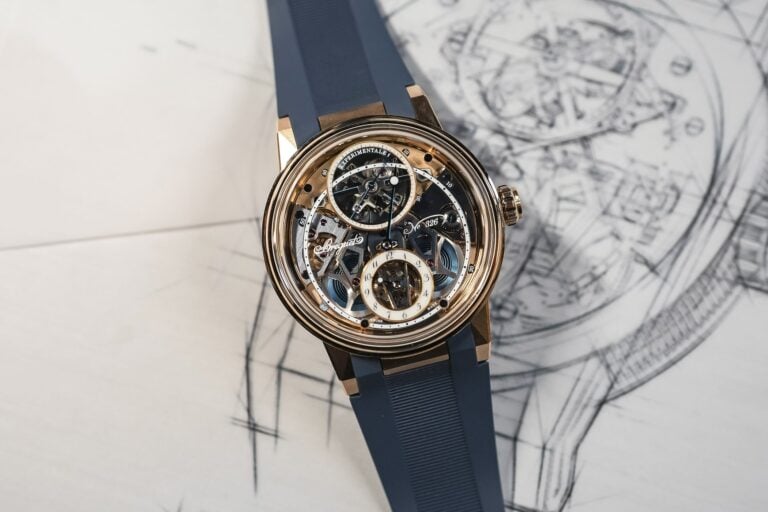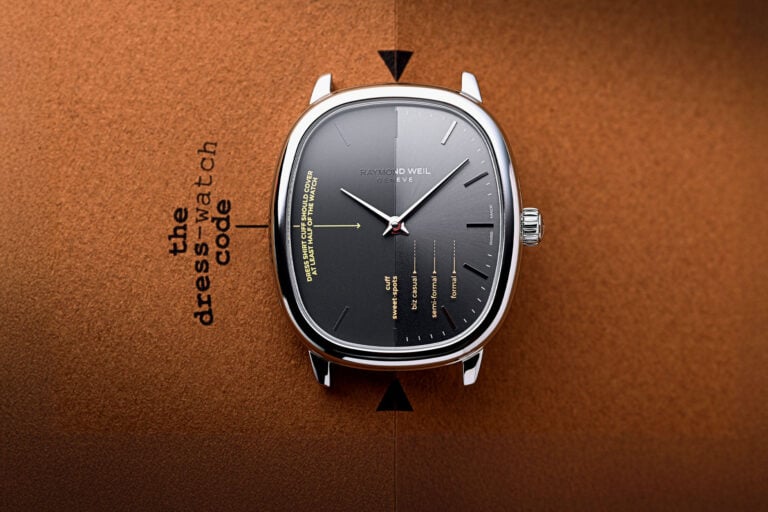The Intellectual Allure of the A. Lange & Söhne Zeitwerk Date in Pink Gold
A deceptively simple display belies the extraordinary complexity and fascinating mechanical solutions that lie beneath.
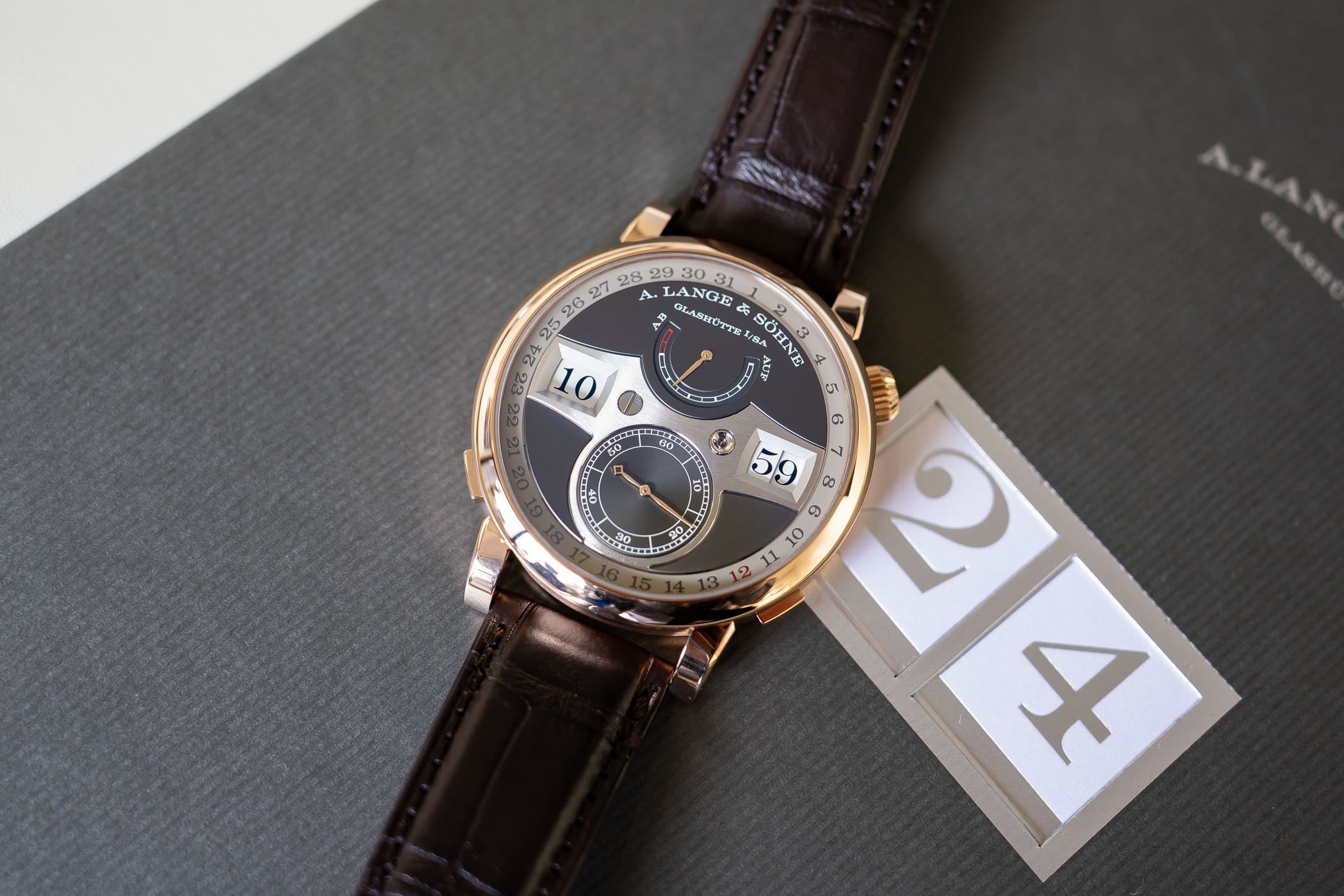
In 2009, A. Lange & Söhne unveiled a timepiece unlike any other in the brand’s collection – past or post-resurrection. With no hands and a digital display powered by a mechanical heart, the Zeitwerk, translated from German as “time machine”, was the first mechanical wristwatch to feature a jumping digital display for hours and minutes. While it “just” indicated the time, the Zeitwerk was a creature of deep technical complexity. More than just a visually arresting face, the Zeitwerk is what you might call an “intellectual” watch that invites a deeper exploration of the ingenuity and Saxon pragmatism invested in the movement. The tenth anniversary of the Zeitwerk in 2019 was marked by the addition of a date feature. Perhaps not an earth-shaking birthday gift, we must remember that this is Lange, and a seemingly straightforward date resulted in a new movement with an increased power reserve. First released in white gold, let’s take a closer look at the pink gold Zeitwerk Date released this summer.
Backstory
Anyone who has had the good fortune of visiting the A. Lange & Söhne’s manufacture in Glashütte will have made a mandatory pitstop at Dresden’s Semper Opera House. Not to sit through an opera, but to admire a clock positioned above the stage with a digital display of jumping hours on the left and minutes on the right, jumping in 5-minute increments. Built by master clockmaker Johann Gutkaes with a little help from his partner and son-in-law, Ferdinand Adolph Lange, the stage clock inaugurated in 1841 featured exceptionally large numerals (Roman hours and Arabic minutes) designed to be visible from all the seats. The layout of the Semper clock would find a new lease of life on board the iconic Lange 1, with its outsize date window, and influenced the face of the Zeitwerk with its triple jumping digital display.
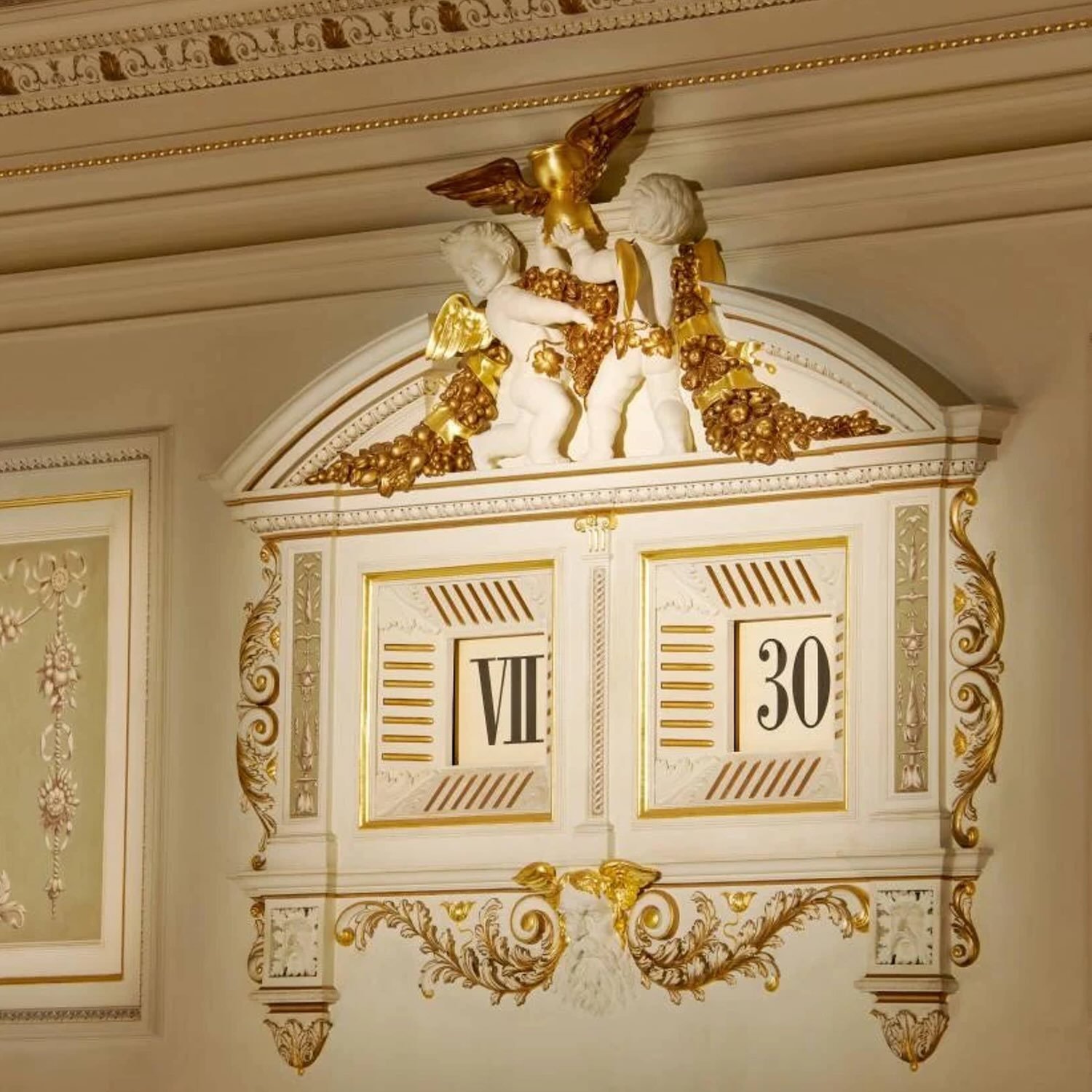
Since its debut, the Zeitwerk has been available with chiming complications, various case materials, a glow-in-the-dark model, and a Handwerkskunst edition showcasing refined engraving techniques. Aesthetically, all Zeitwerks share the distinctive horizontal display with two large rectangular apertures placed at either end of the central bridge: one on the left for the jumping hours and the other on the right for the jumping minutes. As prominent a player as the other design elements, the bold wing-shaped German silver bridge frames the deep-set time indications, cradles the AB/AUF power reserve gauge above, and encircles the subsidiary seconds counter at 6 o’clock.
Mechanically, the Zeitwerk family are also united by a core technical element: a patented constant-force escapement. To provide enough energy for the simultaneous triple jump occurring at 11:59 pm, for example, the movement needs an extra-strong mainspring. The downside is that the spring tends to deliver more power when fully wound, diminishing as it unwinds and seriously disrupting precision. To maintain an even flow of energy throughout the entire power reserve and contribute to rate stability, all Zeitwerks are equipped with a constant-force escapement. You can see the remontoire on the reverse side of the case, with its anchor-shaped steel bridge positioned above the gears.
In 2019, coinciding with its 10th anniversary, Lange gifted the Zeitwerk a date complication. While a straightforward date might seem like a bit of an anticlimax in the wake of the complex, striking complications, the sheer technical demands resulting from adding a date turned out to be a very generous birthday present indeed.
Creativity & Pragmatism
And this is where Lange’s technical brilliance and German pragmatism really come to the fore. Unwilling to do things the easy way, Lange’s director of product development, Anthony de Haas and his team not only found an elegant solution to display the time without disrupting the purity of the display but doubled the power reserve from 36 to 72 hours, as explained in the video here.
To preserve the Zeitwerk’s distinctive layout, the printed glass date ring is positioned on the periphery of the dial, featuring transparent numerals and a small red segment beneath the ring that advances one step at midnight. Advancing three separate discs requires an enormous amount of energy, especially the 60-second jump required by the minutes. To give you an idea, the patented jumping numerals mechanism switches the numeral discs 1,440 times a day. Now, add another energy-consuming element, such as the date, and the dilemma multiplies exponentially. To generate the force required to advance the three jumping discs and the date, the calibre L04.38 has a powerful twin mainspring barrel, complemented by a fly governor to absorb excess energy and protect the mechanism.
For a fantastic horological treat, tune in at midnight when all three numeral discs and the date ring switch simultaneously at lightning speed. To produce this spectacle, the mainspring barrel delivers a colossal torque of 28 newton-millimetres while the fly governor absorbs the surplus energy, preventing a hard landing.
Push & Protect
Lange’s watchmakers are bent on finding ingenious solutions that make life easier for the user while protecting the movement. Fitted with two pushers, the hour display of the Zeitwerk Date can be advanced with the pusher at 4 o’clock. With every activation of the pusher, the clutch uncouples the hour ring from the jumping numerals mechanism. However, in true Lange style, the switching impulse is generated when the pusher is released, so that regardless of the pressure applied to the pusher, it is always executed with a consistent force. Like the pusher for the hour display, the date can also be corrected via the pusher at 8 o’clock, also generating the switching impulse when it is released.
Warm Pink Gold
Compared to the somewhat austere inaugural version of the Zeitwerk Date with cold white gold and a grey palette, the rose gold infuses the watch with an immediate sense of warmth and luxury. Naturally, the incorporation of the date window increased the case diameter from 41.9mm to 44.2mm, but it had a minimal impact on the thickness, which increased by only 0.1mm to 12.3mm. While there is no denying that this is a large timepiece, strangely enough, the larger case size relative to its thickness works in its favour, and the watch looks more refined, balanced and slimmer on the wrist than the no-date version.
As you might have expected from Lange, the pink gold used for this case is not your average gold. Using an alloy composed of 76% gold, 20% copper, and 4% silver, Lange’s pink gold formula is not as intense as other rose and red gold alloys, imparting an elegant, classy vibe. The grey dial, which looked somewhat achromatic with the white gold case, is maintained but benefits, we believe, from the warmth of the polished pink gold case. Echoing the case, the hands of the subsidiary seconds and the power reserve indicator are also crafted in pink gold.
As mentioned, the German silver bridge spanning the dial contributes to the technical, Teutonic personality of the watch with its large screw on the left mirrored by a colourless jewel in a white metal chaton next to the minute display. Legibility is flawless thanks to generously sized hour and minute numerals. Beautifully finished throughout, the deep-set apertures for the time are bevelled, the interior of the subsidiary seconds is snailed, and a welcome pop of colour is provided by the red in the AB/AUF power reserve gauge and the date.
Movement L043.8
Yet another horological treat awaits on the reverse side with its view of the manual-winding manufacture calibre L043.8. With a diameter of 37mm and height of 8.9mm, the movement is composed of 516 parts, 70 jewels and two screwed gold chatons. As mentioned, the constant-force escapement is visible beneath the T-shaped polished steel bridge with four rubies. The second clear sapphire jewel in a gold chaton is just to the right of the remontoir and corresponds to the fourth wheel.
Beautiful artisanal finishes, such as the signature ¾ German silver bridge with its Glashütte stripes and polished chamfers, the hand-engraved balance cock, the blued screws, and the ratchet wheel decorated with solarisation, confirm the provenance of the movement. On the technical front, the L043.8 has a 2.5Hz frequency and delivers a power reserve of 72 hours, twice that of the non-date Zeitwerk.
still waters run deep
The Zeitwerk is a paradoxical creature: ostensibly simple, but amazingly complex. If you were to judge it exclusively on its looks, you would be missing out on the horological ingenuity driving the Zeitwerk Date. While the coverage of its technical prowess is not remotely exhaustive, the Zeitwerk Date is a watch that demands your full attention. After all, the more time invested in understanding and learning about something, the higher the appreciation.
The watch is paired with a dark brown hand-stitched alligator leather strap, closed with a matching pink gold buckle. As for price, the new Zeitwerk Date in pink gold retails for approximately EUR 130,000. More information at alange-soehne.com.

